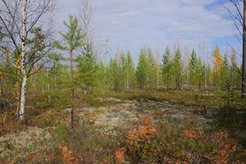Quantification of global methane sources and sinks

Increasing atmospheric levels of the greenhouse gas methane (CH4) are considered responsible for about 20% of the global warming induced by long-lived greenhouse gases since pre-industrial times. Global CH4 emissions are largely determined by (1) production through methanogenic bacteria in wetlands and rice fields, (2) release of methane from geological sources (a.o. mud volcanoes) and during fossil fuel mining and (3) incomplete combustion of biomass and fossil fuels. The main CH4 sink is the oxidation by hydroxyl radicals in the atmosphere, primarily in the Tropics.
In a recent publication in Nature Geoscience, an international expert team including Martin Heimann of MPI-BGC recalculated global methane budgets from the past 30 years, using a combination of atmospheric measurements and results from chemical transport models, ecosystem models, climate chemistry models and inventories of anthropogenic emissions. The inferred budgets show a substantial decadal variability which can be traced to changes in the different CH4 sources and sinks. The renewed increase in global methane levels after 2006 is most probably due to increased emissions from natural wetland emissions and from fossil fuel mining, e.g. exploitation of natural gas from shale formations (natural gas fracking).












